


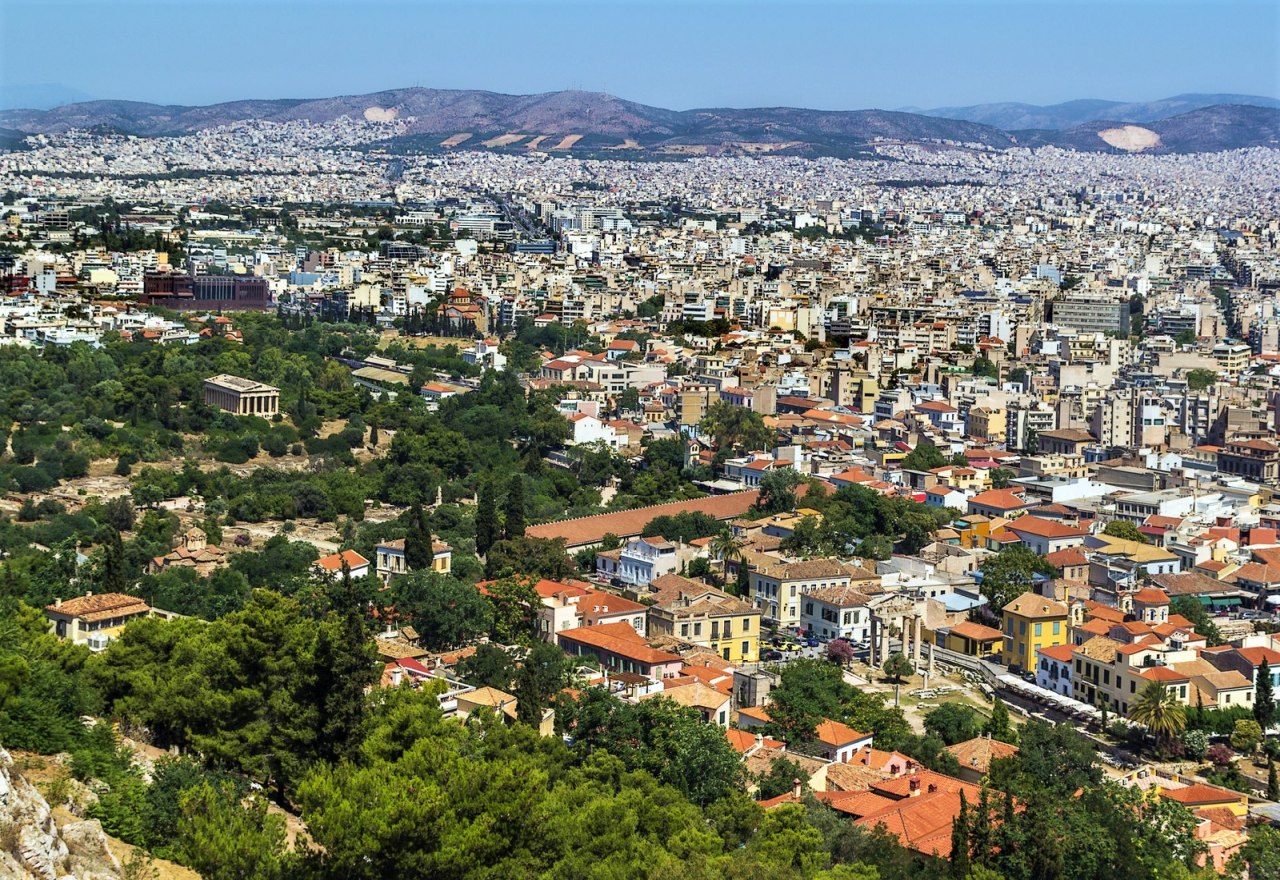
We Need Your Support!
We want to remind you that Athens by Locals is reader-supported. By booking tours, hotels, tickets, and other travel services through the links on our website, you can help us continue providing valuable content and information. Note that we receive a small commission only if you make a booking using our links at the time of your visit. So, if you're not quite ready to book yet, you can save this post and the links and return to make your booking when the time is right. We genuinely appreciate your support and are thrilled to have you in our travel community. Please don't hesitate to reach out if you have any questions or need assistance. Happy travels!
One of Greece’s most incredible and mesmerizing sights is the Ancient Agora of Athens, which once used to be the center for trade, commerce, and politics. Today, situated in the heart of Athens, the Ancient Agora marks the architectural and cultural advancement of the early civilization of Athens.
Ancient Agora is the exact place where the Athenian direct democracy took its root for the very first time. Today, this ancient site is one of the most popular tourist attractions in Athens; people worldwide visiting it are left wonderstruck.
They are astonished by the splendor of the building and remain as it truly reflects the culture, power, and glory of early Greeks.
If you are in Athens or planning to travel there, Ancient Agora certainly deserves a visit!
In Greek, Agora stands for an “open place of assembly”; thus, this Ancient Agora once was a gathering area for free-born Athenians, where they could meet, congregate, and discuss social, political, and economic issues.
The Ancient Agora dates back to pre-historic times; however, it reached its summit during the classical era in the 5th century BC. Throughout the entire history of this architectural wonder, the site witnessed the various transfers of power between various empires.
It all began with the nationwide cultural transition from the Mycenaean civilization in 1200 BC to the spectacular Athenian era and continued later on with the transition from the classical Roman culture to the spiritual Byzantine centuries.
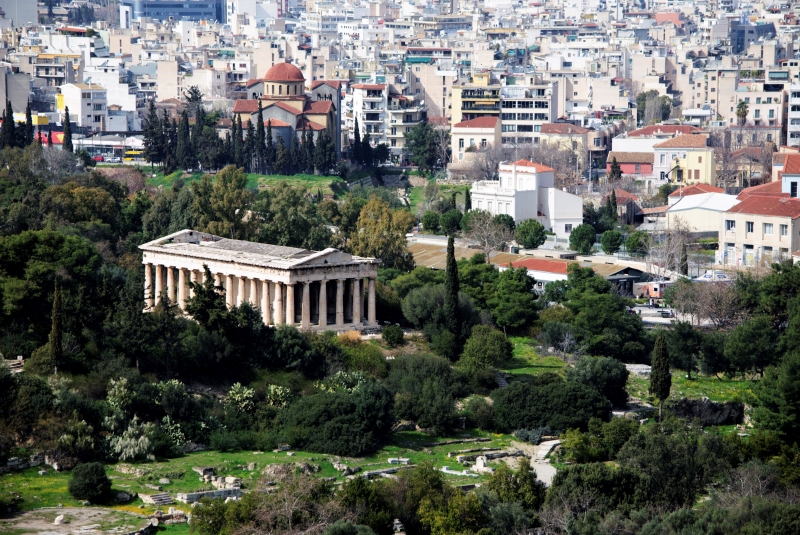
Over the course of time, the control of the Ancient Agora became a symbol of power among rulers, resulting in the site’s plundering and destruction by invading forces more times than its current state would have you think.
Back in 480 BC, it was first destroyed by the Persian invaders.
Fortunately, very soon, the Ancient Agora flourished again in the 5th century BC when the Athenian culture thrived.
However, the plundering continued in later centuries when Agora was destroyed by Romans in 86 BC.
The Romans rebuilt the Ancient Agora with added buildings, including the imposing Odeon. It remained a center of activity in Athens with rich cultural and economic significance for a long time and was finally razed by the Slavs in 580 AD.
Since then, it remained uninhabited until Greece won its independence from the Ottoman Empire in the mid-19th century.
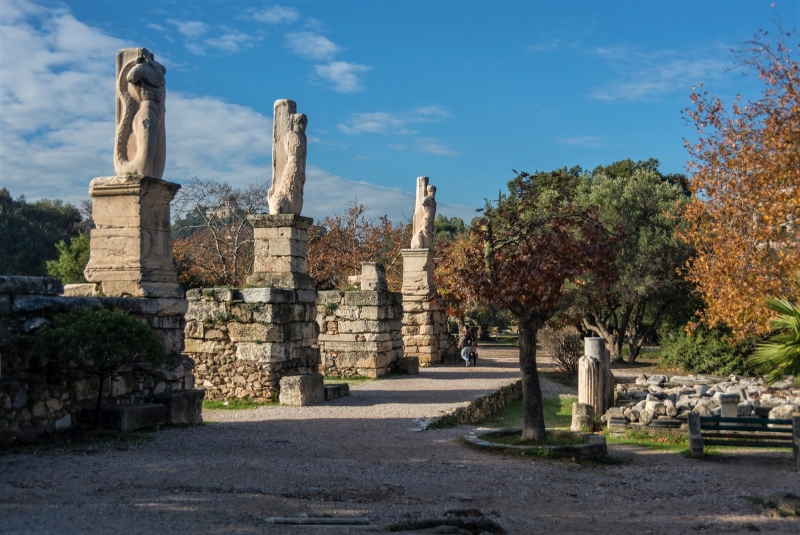
The process of bringing this magnificent archaeological site to light began in 1859, but it didn’t really produce any significant results until 1931 when the American School of Classical Studies got the green light from the Greek government to start excavations on the location.
Until the start of the 20th century, the site now known as the Ancient Agora was actually a significant part of the city center of Athens, full of houses and shopping streets.
When the excavation process began -funded by John D. Rockefeller- more than 360 residences had to be brought down for the ancient buildings to be uncovered.
Soon after, the Stoa of Attalos was rebuilt based on its original plans, and the Ancient Agora Museum opened its doors to visitors worldwide.
The Ancient Agora is situated in the heart of Athens, between the neighborhoods of Thission and Monastiraki. See the map here.
It is situated northwest of the Acropolis, while on the south and west, it’s surrounded by the Areos Pagos and Kolonos Agoraios hills.
Today, the Ancient Agora of Athens is a green area with remains of scattered rocks and fountain walls, depicting the atmosphere of a busy marketplace. Certainly, it reflects the true beauty of the majestic past of the city of Athens.
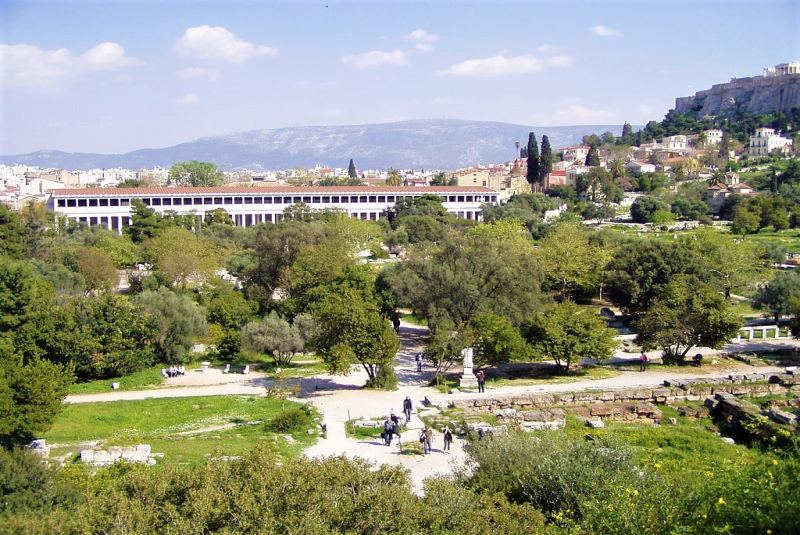
Some of the most remarkable ancient sights of Athens which depict the true prestige of Athenian can be witnessed at Ancient Agora including:
The Stoa covers most of the eastern side of the Ancient Agora, and the original building was initially built in 150 B.C.E by King Attalos II of Pergamon.
Therefore, the Stoa is named after him only. Since then, it has been razed various times; however, it was reconstructed in an even more majestic way.
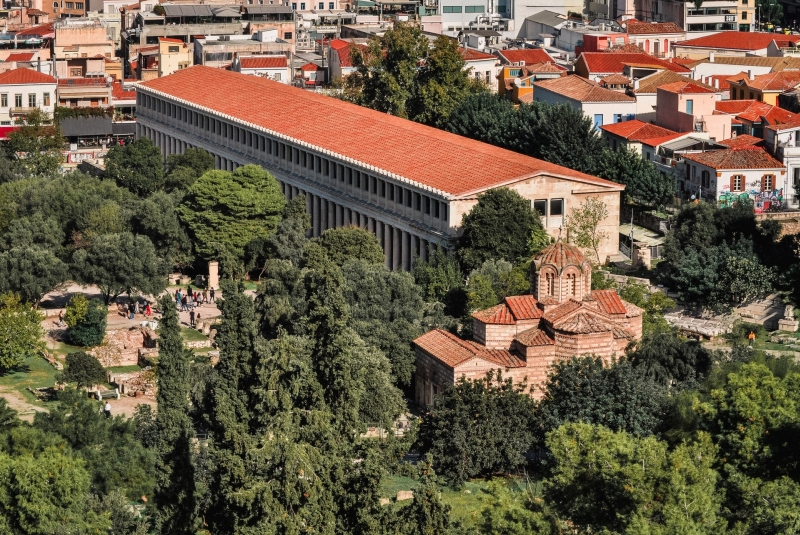
The building that still stands today is a result of the reconstruction of the site by the American School of Classical Studies from 1952 to 1956.
On the ground floor of Stoa, you’ll find the Ancient Agora Museum, which holds and exhibits various artifacts including statues discovered from Agora excavations.
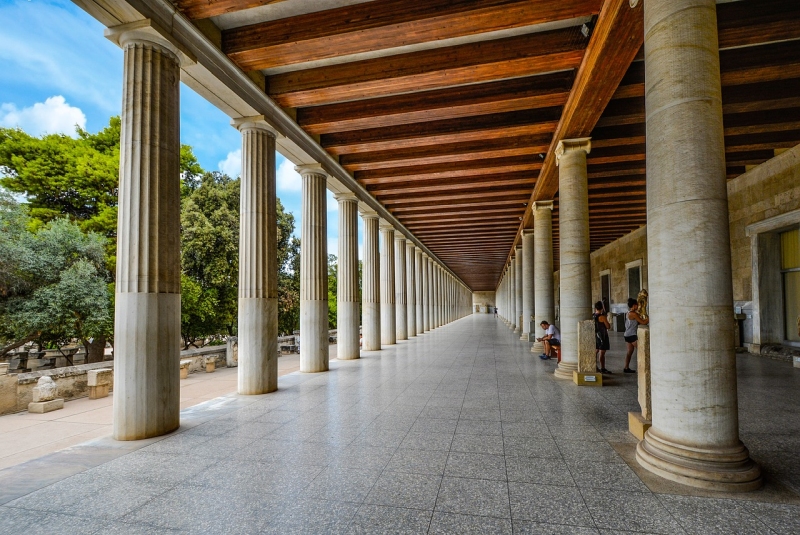
The museum clearly reflects the developmental stages of the ancient Agora and Athens and demonstrates historical wonders from the Neolithic to the Post-byzantine and Ottoman periods.
In the article below, you can read any information you may need about the great and small museums in Athens, like ticket prices, opening hours, free admission days, and many more!
The temple of Hephaestus (also called Theseion) is indeed one of the most phenomenal monuments on the northwest end of Agora.
It is surely captivating enough to grab every visitor’s attention.
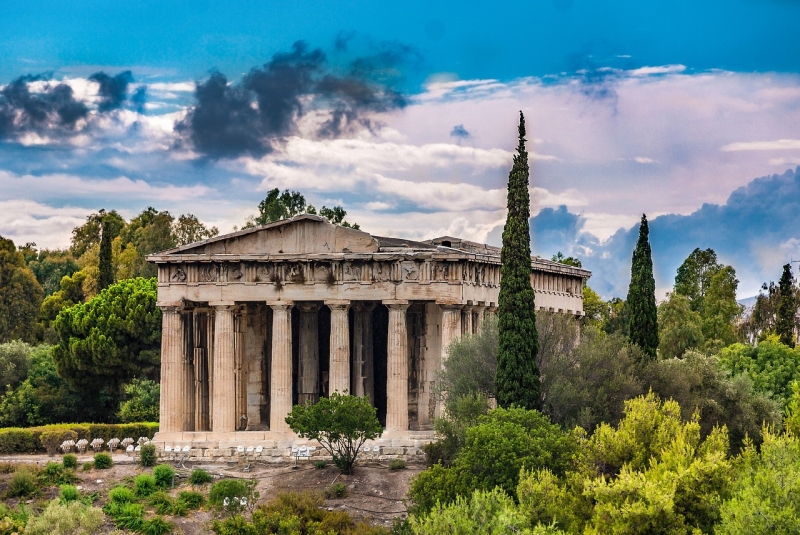
The temple dates back to 449 BC and, fortunately, is still preserved outstandingly, partly because it was later converted into a Christian Church.
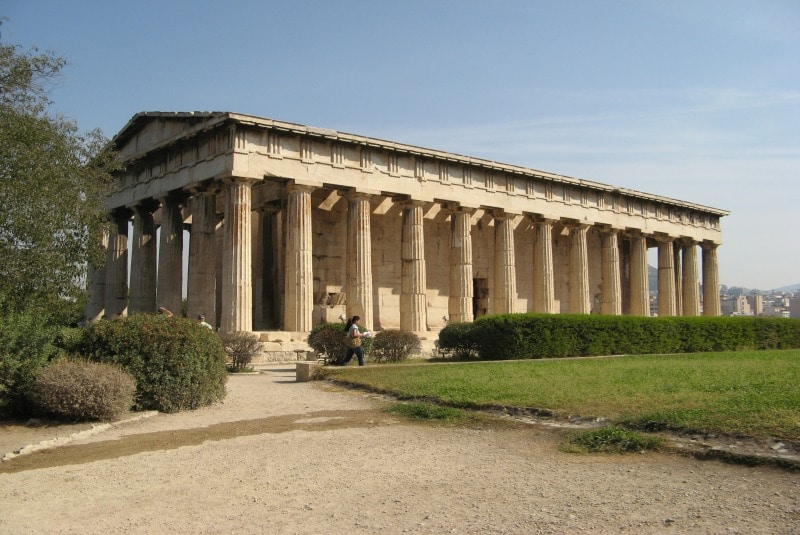
The temple of Hephaestus depicts the cultural and religious views of ancient Athenians and is one of the oldest temples in existence. Visiting it is surely a must for every tourist in Athens!
On the left corner of the Ancient Agora of Athens, this little church is one of the most visited attractions of the ancient site.
This captivating church is extremely unique in design and architecture and a true example of the religious differences of the past eras.
The Byzantine Church of the Holy Apostles has also been a target for vandalism and destruction through the centuries, but fortunately, it’s still preserved in relatively good shape.
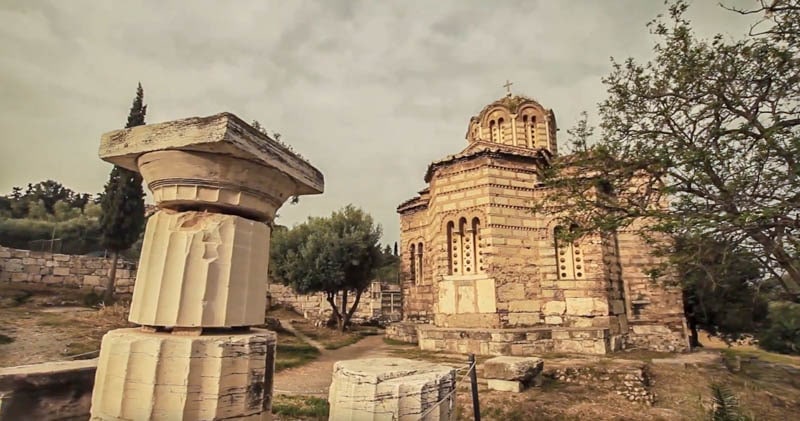
The name Panathenaic Way refers to the famous road that passes through the Ancient Agora and winds towards the Propylaia of Acropolis Hill before climbing up to the Parthenon.
During the Great Panathenaia (one of the largest festivals of ancient Greece held to honor the patron goddess of the city, Athena), the most prominent citizens of Athens would walk in procession on the Panathenaic Way towards the celebrations.
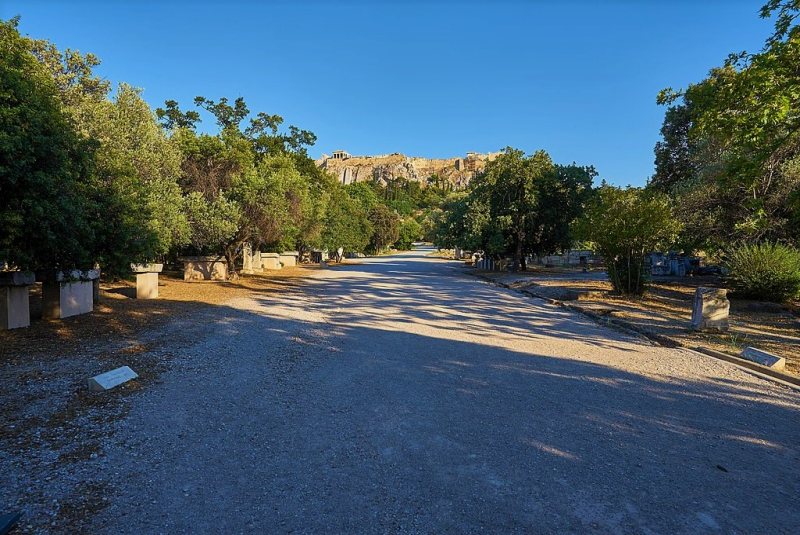
Simon the Cobbler was but an ordinary citizen of the ancient city of Athens, but his house was far from an ordinary place.
It is said that this residence is where the great philosopher Socrates met with his students regularly, especially those who were too young to be allowed access to the Agora.
Some sources claim that Simon the Cobbler documented the famous thinker’s conversations with his students that were later published under the name “Skytikoi dialogues”, a title which translates into “dialogues of the shoemaker”.
The remains of Simon the Cobbler’s house are still visible today.
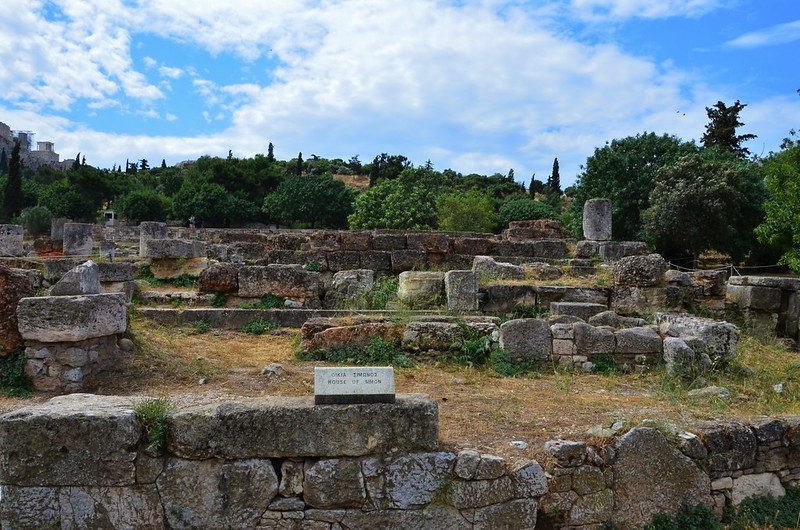
What remains of the Bouleuterion is a reminder that the Ancient Agora of Athens played a significant role in the first steps of democracy as a new political system that would soon spread throughout the world.
The Bouleuterion is where the Roman Senate would meet and where some of the most important generals and strategists of the time would lay out their plans for the city.
Nearby, the Odeon of Agrippa (that takes its name after the influential Roman general Marcus Vipsanius Agrippa) and its beautiful decorative statues stand as proof that Romans had conquered Athens by the sword, but the Athenian culture had reigned supreme even in times of foreign occupation.
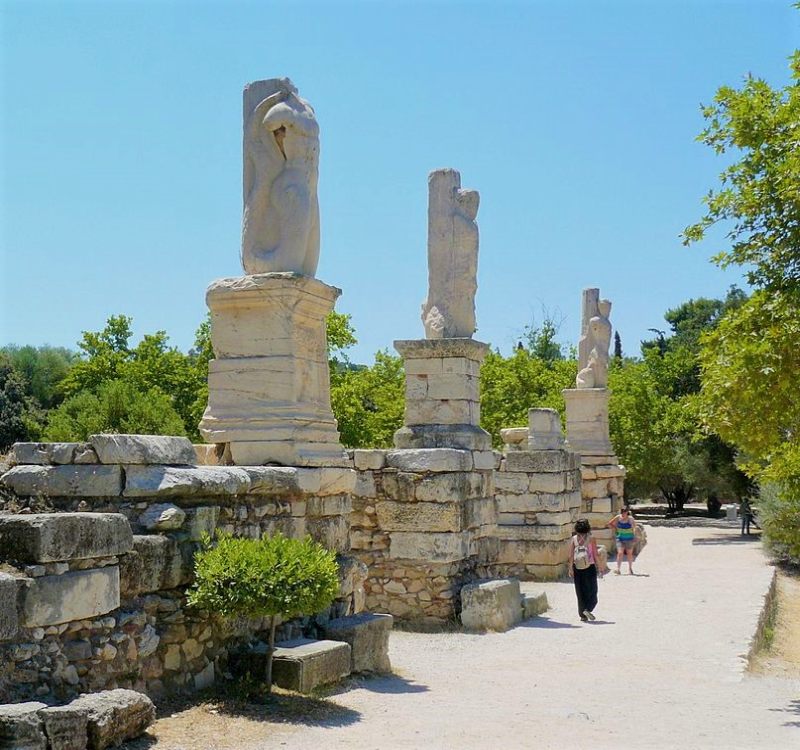
The Ancient Agora opens every day of the week except for National Holidays, from 08:00 – 17: 00 and can be visited any time in between.
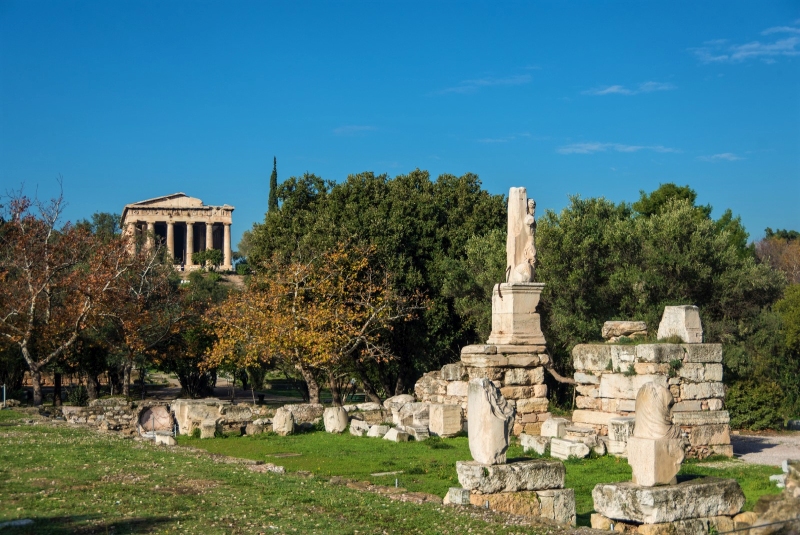
The last admission is allowed 30 minutes before the closing time, after which no one can enter. It would be ideal to visit the site around 9 am before the heat intensifies and Agora gets overcrowded with tourists.
Fortunately, the entry ticket for Ancient Agora is made reasonable for all, with just 8 Euros ($9), for adults and 4 Euros ($4.5), for students.
However, you can always buy the combined ticket, which costs 33 Euros for adults and includes entry to the Acropolis, Ancient Agora, Roman Agora, Theatre of Dionysus, Kerameikos, Hadrian’s Library, and the Temple of Olympian Zeus.
The rich archaeological site of Ancient Agora is in the middle of the city, and easily accessible by metro.
Metro Line 1 to Thisseion or Monastiraki or Bus lines “025, 026, or 027”, could be used to arrive at Monastiraki. Reaching Thisseion or Monastiraki, you will be able to find the Ancient Agora ruins within 5 minutes’ walking distance.
Even if you reach the Ancient Agora by taxi, you’ll still have to cross that walking distance as no cars are allowed to reach the Agora’s entrance (Adrianou Street).
Overall, the Ancient Agora is one of Athens’s most unique and significant landmarks. And even though time has certainly taken its toll on the site’s buildings, temples, and residences, a walk through the ruins will feel like a trip through time, an experience we advise you not to miss on your next trip to Athens.
A Quick Reminder:
Remember that Athens By Locals is here to guide you with planning the perfect trip to Athens and help you every step along the way. If you didn’t found what you’re looking for, or need any recommendations about your trip to Athens, feel free to contact us and we will do our best to help you. Please be as more detailed as possible regarding your subject so as to help you better.
If you like what you read please scroll down at the end of this page and subscribe to Athens By Locals so next time to receive more articles like this straight forward to your email. Join us on Facebook for comments, photos, and other fun stuff. If you enjoy this article please share it with your friends on Facebook.
Copyright © 2024 Athens By Locals © All rights reserved. No part of this site may be reproduced without our written permission.
Images owned by Athens By Locals. Image Banks or Companies promoted.